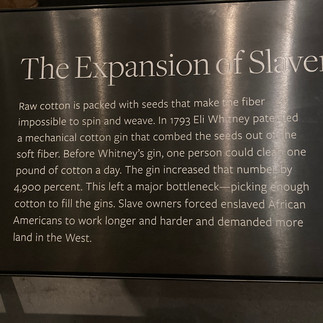NMAAHC
- Pilar Uribe
- Jan 31, 2023
- 2 min read

History Lesson
Before leaving DC, I walked through the Smithsonian’s National Museum of African American History & Culture with my mom. Upon arrival, we went up the escalators, intending to begin on the top floor. I asked a gentleman at the gift stand where the entrance was. "Start at the bottom, work your way up and then come see this floor." I went back to thank him afterwards. At the lower level, you're meant to feel the enclosed space while reading the history and bravery of so many men and women. There was a teacher shepherding students from South America and she graciously allowed us to follow her tour. I listened to facts I didn't learn in school. It's hard to explain the feelings going through this exhibit; all I can offer are a few pictures. I know one thing: I have to go back one day. It’s worth the trip.
Portuguese vessels carried an estimated 5.8 million Africans into slavery
Slave Shackles
Rosa Parks, Montgomery, AL 1955 Bayard Rustin, right, activist Colored restroom on a train
Our tour guide, Maria Re-enactment of Greensboro sit-in Musical Crossroads
‘...The national economy relied upon slavery; the U.S. Constitution defended slavery; and the country expanded west to extend slavery. Despite daily denials of their humanity, enslaved African Americans sustained a vision of freedom by making prayer, family, dance, food, dress, and even work their own. They built their own identities.’
For more information, visit: National Museum of African American History and Culture
























